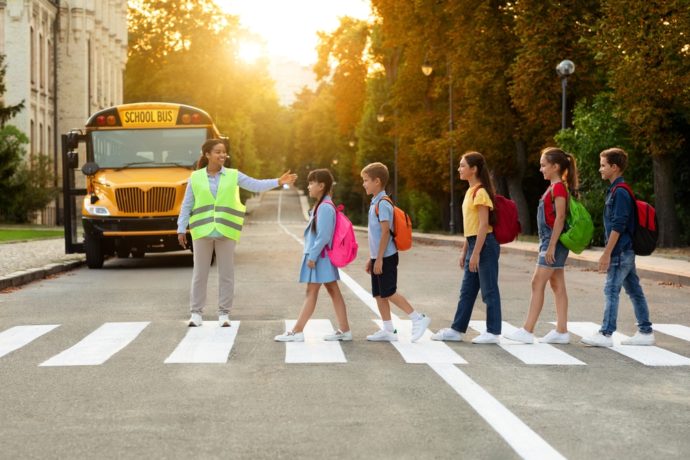After the long summer, it’s always fun to see the school buses rolling down the streets to take kids back to school.
If you are like most parents, you have weighed your options to get your kids to and from school safely. From school buses to carpools, millions of students across the country arrive at school in a vehicle.
But walking to school can be a fun and healthy adventure, even if you are outside of the walker radius. It also helps kids become more confident as they build trust and learn to be independent.
According to data from the National Center for Safe Routes to School, participation in Walk & Bike to School Day continues to break records each October since it began in 1997: In 2023, 3,475 events were held in 47 states, with participation from lower grades through high school.
So whether you need a backup plan in case the bus doesn’t come, the carpool falls through or you want to make walking part of your everyday school routine, follow these 5 tips to help your child walk to school safely.
1. Map a Safe Route in Advance
Walk the route to school in advance with your child. Be sure to time how long it takes so they know when to leave to make it to school on time—and when you should expect to see them come home after school.
Many communities have invested in safety measures on roads near schools—such as high visibility crosswalks, raised meridian islands, flashing beacons and parking restrictions near intersections—but you’ll want to get an idea of what obstacles your kids may encounter along your route.
As you walk, take note of any of your child’s classmates or friends who live along your route. Talk to their families about walking together. While it is fun for your kids to walk with friends, there is also safety in numbers.
2. Create a “Walking School Bus”
A great way to get comfortable with the walking routine before sending your kids out solo, walking school buses are adult-supervised groups with fixed routes, stops, pick-up and drop-off times. While middle and high school students might be able to walk alone, modeling and encouraging safety in numbers goes a long way towards making your kids feel comfortable and confident enough to walk unsupervised. The CDC recommends 1 adult for every 6 children in the type of group, though you can recruit more for groups of younger children.
3. Designate Corner Captains on Your School Route
When forming your walk-to-school group, choosing a corner captain—aka an adult volunteer who provides an extra set of watchful eyes during the morning or afternoon walks—is a Safe Routes-approved way to make walking commutes safer.
Having these trusted adults wear a reflective vest or bright piece of clothing can designate their status to children and adults who join the walkers. In addition to keeping an eye out for car traffic at street crossings, corner captains serve as an additional presence for safety.
4. Establish a Safe Place for Kids
It’s a good idea to establish a safe place for kids to meet in case something happens or if an emergency comes up while they are walking. Work with other parents on your walking route to designate a meeting place or a safe house to go in case of an emergency, such as a trusted neighbor’s home or agreed-upon landmark.
5. Teach Street Smart Skills
Before sending your kids on a walk to school unsupervised, be sure to emphasize the importance of walking with friends, reporting unsafe behavior, being aware of their surroundings and knowing safe places along your route. Remind them to never walk with headphones on and to not look at their devices while they are walking.
Also, if your kids come home to an empty house after school, make sure they know to check in with either you or a trusted neighbor.
By working together on establishing safety ground rules, you can help your child gain independence and important life skills while keeping them safe as they walk to school.





